Impress your dinner guests with this delicious and easy stuffed pork tenderloin recipe. The tenderloin is stuffed with sauteed shallots, red bell pepper, garlic, spinach, and Parmesan cheese, pan-seared and roasted to golden perfection.
I like to serve this with long-grain white rice or wild rice. Scalloped potatoes and rosemary-roasted potatoes are also delicious sides. This dish is easy enough for a weeknight yet elegant enough for company.
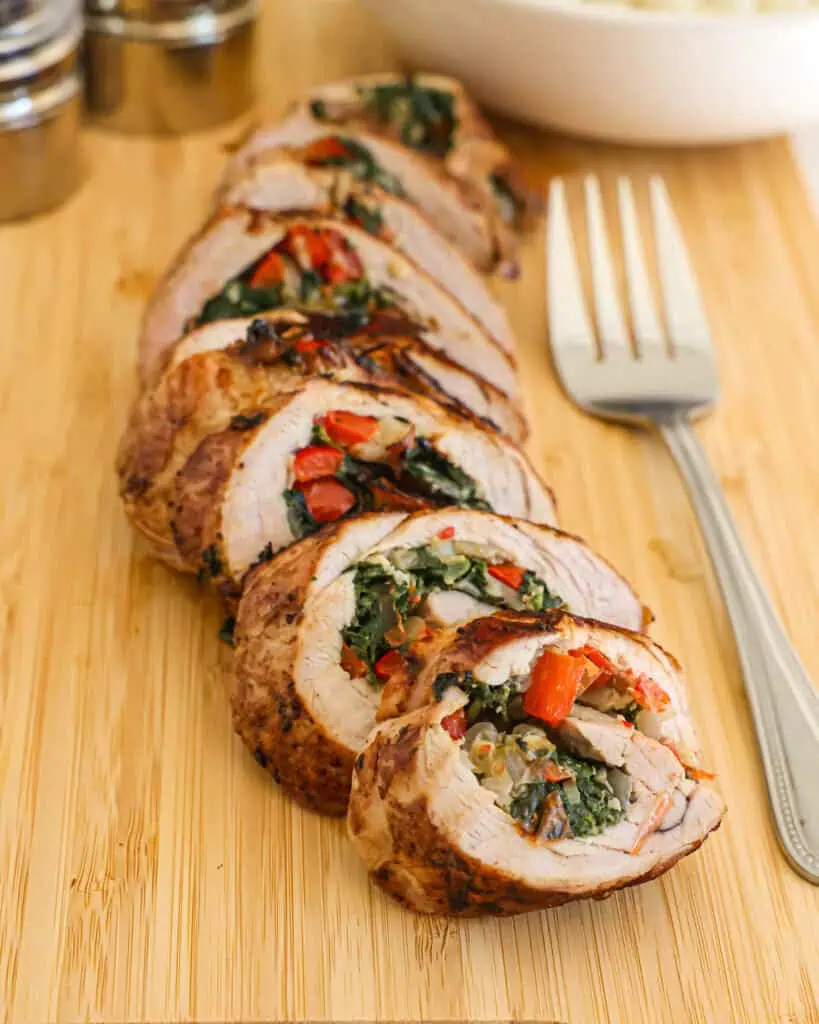
Ingredient Notes and Substitutions
See the complete list of ingredients below on the recipe card.
- Shallots: If not available, use a small, sweet yellow onion
- Bell pepper: I like to use a sweet red one for flavor and color contrast, but any colored bell pepper works.
- Rosemary: I love it, but use fresh thyme or parsley if you don’t.
- Baby spinach: It is more tender and has fewer stems. You can use any spinach, but remove the long stems.
- Parmesan cheese: For the best flavor, freshly grate the cheese from the block.
- Pork tenderloin: Use a 1 1/2 pork tenderloin if you can find it. Make sure the silver skin is removed, or remove the silver skin yourself.
How to Make Stuffed Pork Tenderloin
This is the summary version; see the recipe card below for the complete list of ingredients and the instructions.
First, saute the shallots and red bell pepper in butter over medium heat. Reduce the heat to low and add the garlic, rosemary, and spinach. Remove the pan from the heat and stir in the Parmesan cheese.
Prepare the pork tenderloin by removing the silverskin. Then, cut the pork tenderloin lengthwise through the center. Do not cut all the way through. Then, open up the pork tenderloin like a book. Cover the meat with plastic wrap and pound it to 1/4-1/2 inch thick with a meat mallet.
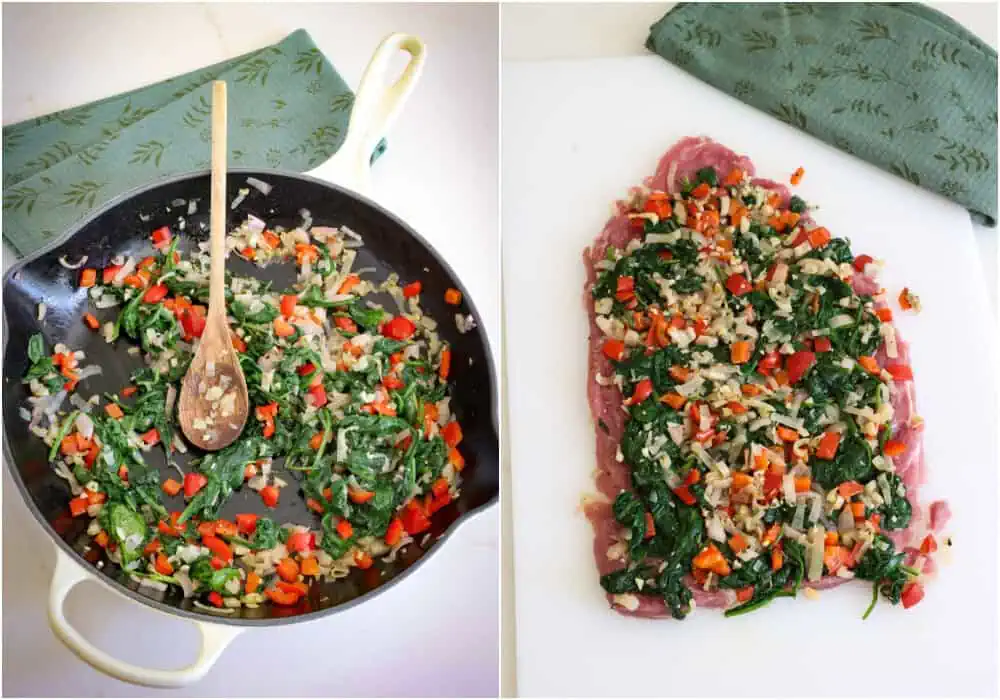
Spread the cooked vegetable mixture over the pork. Roll the meat lengthwise as tight as possible and truss it or secure it with toothpicks.
Heat the olive oil in an ovenproof skillet and sear the tenderloin on both sides. Place the skillet in the oven and roast for about 10-12 minutes, then flip the tenderloin and cook for another 10-12 more minutes or until the internal temperature is 145 degrees.
I usually pull the dish from the oven when the pork reaches 140 degrees and let the residual heat finish cooking it. Remove the stuffed tenderloin to a cutting board and cover loosely with aluminum foil. Let it rest for 10-15 minutes before removing the kitchen twine or toothpicks and slicing it.
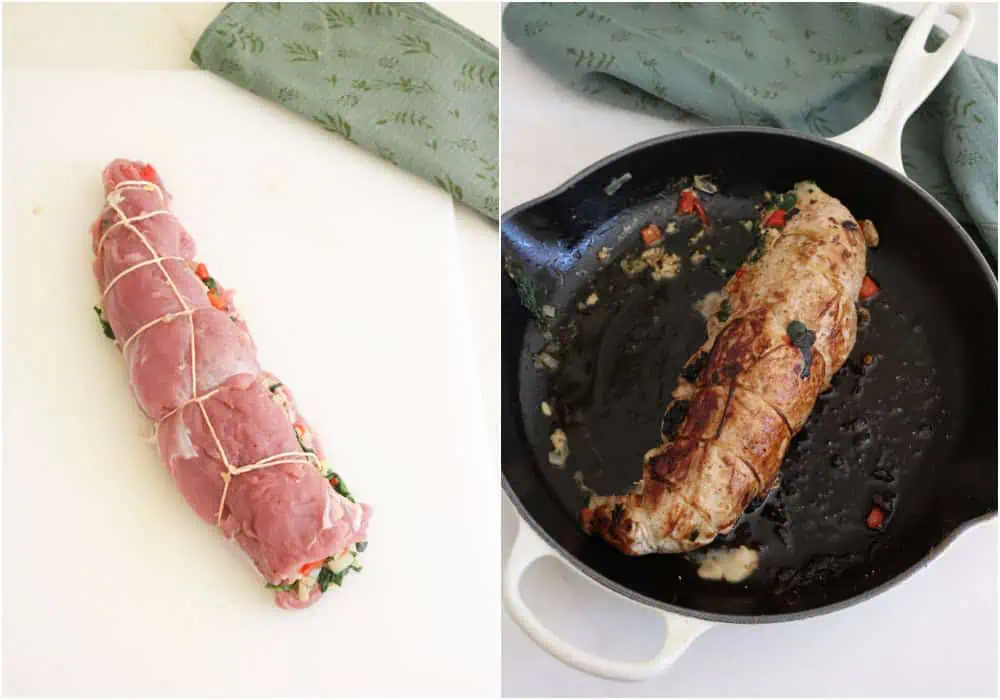
Preparation Tips and Storage
- Choose one of the larger pork tenderloins for ease in pounding and rolling. You can secure the pork tenderloin with toothpicks, but trussing is easier and more secure.
- Pork is done when it reaches an internal temperature of 145 degrees. An instant-read thermometer is an inexpensive kitchen tool that is a must-have.
- Let the pork rest for 10-15 minutes before cutting the twine and slicing the tenderloin.
- Store leftovers in an airtight container in the fridge for up to 3 days. Reheat in the microwave at 50% power for 45-second increments or until warm.
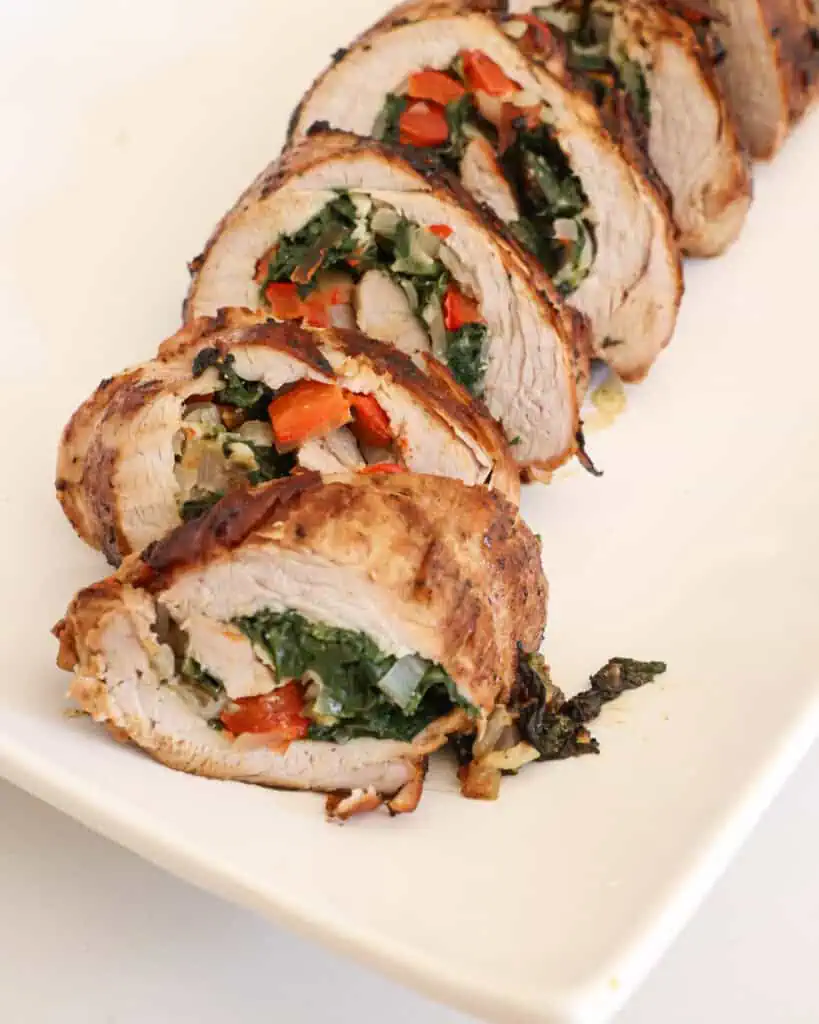
Serving Suggestions
- Pasta and rice: angel hair pasta, parmesan pasta, and white or brown rice
- Potatoes: garlic mashed potatoes, twice-baked potato casserole, and mushroom pasta.
- Vegetables: pan-sauteed asparagus, glazed carrots, and Brussels sprouts with bacon.
- Drinks: raspberry margarita, blueberry lemonade, and Arnold Palmer iced tea.
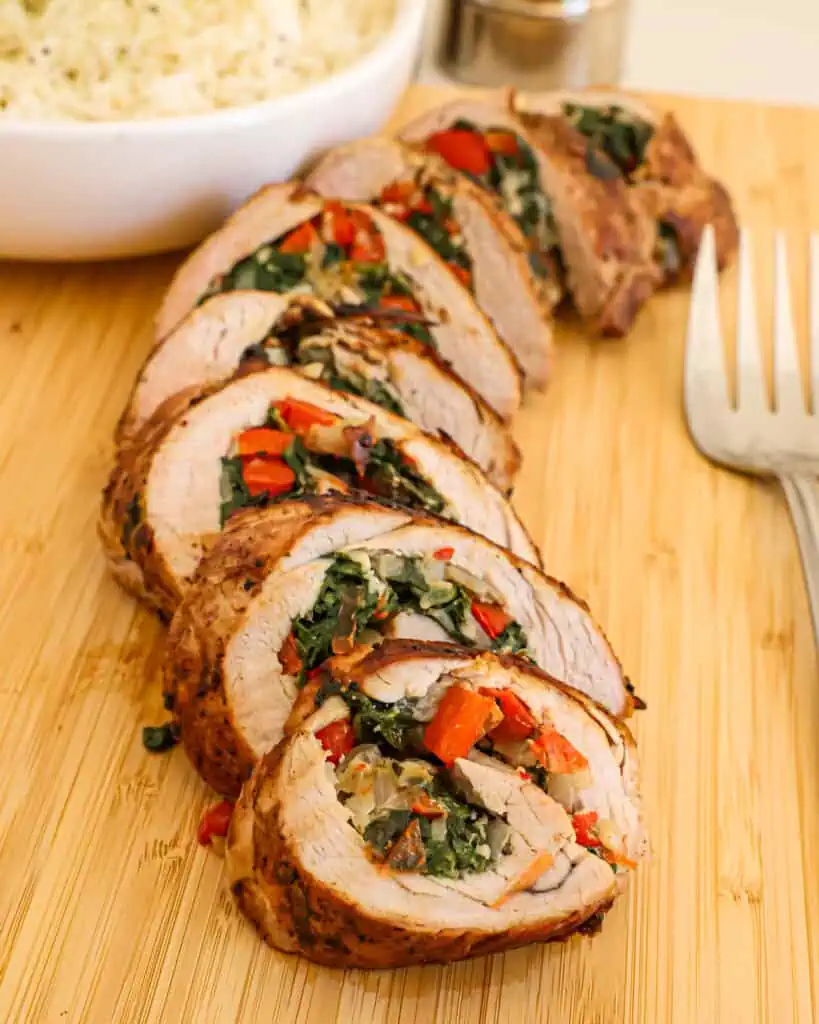
More Pork Tenderloin Recipes
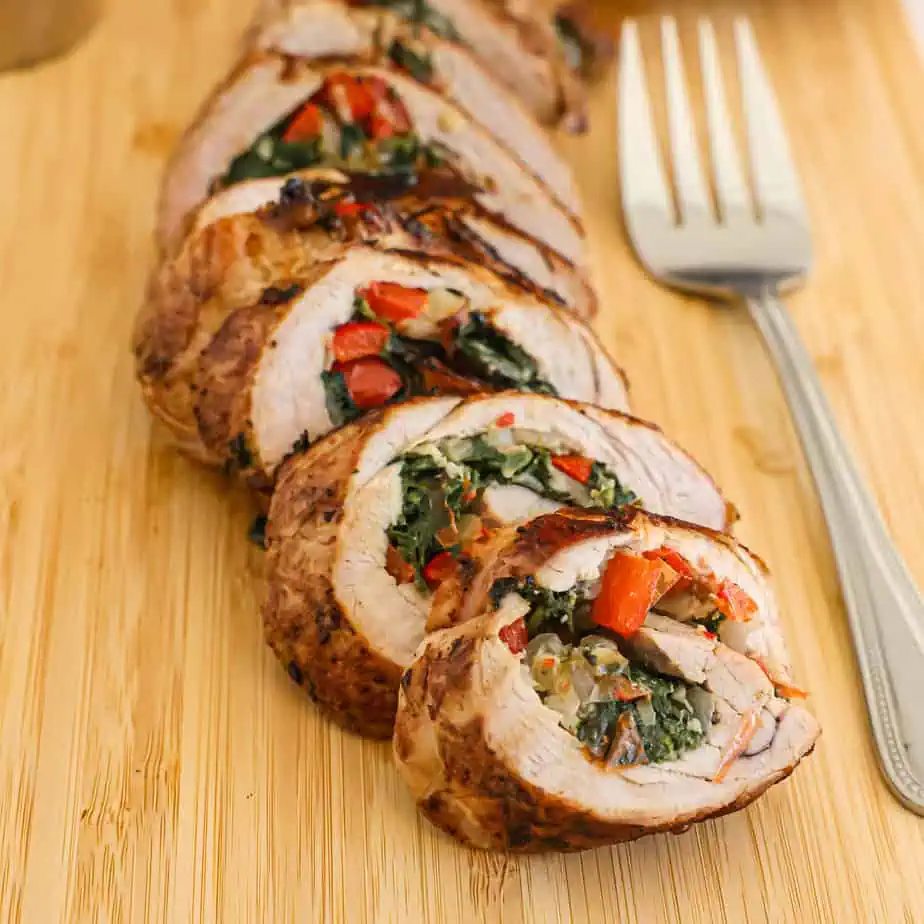
Stuffed Pork Tenderloin
Ingredients
- 2 tablespoons butter unsalted or salted
- 3 shallots chopped
- 1 medium red bell pepper finely diced
- 3 cloves garlic minced
- 1 tablespoon chopped fresh rosemary
- 6 ounces baby spinach
- ½ cup freshly grated Parmesan cheese
- salt to taste
- freshly ground black pepper to taste
- 1 ½ lb pork tenderloin silver skin removed
- 1 ½ tablespoons olive oil
- kitchen twine
Instructions
- Melt the butter in a large skillet over medium heat. Saute the shallots and bell peppers until soft. Reduce the heat to low, add the garlic, rosemary, and spinach, and cook until the spinach wilts, stirring frequently. Remove the pan from the heat and stir in the Parmesan cheese. Season with salt and freshly black pepper to taste.
- Prepare the pork tenderloin by removing the silverskin. Cut the pork tenderloin lengthwise through the center. Do not cut all the way through. Open up the pork tenderloin like a book. Cover the meat with plastic wrap and pound it to 1/4-1/2 inch thick with a meat mallet.
- Spread the cooked vegetable mixture over the pork. Roll the meat lengthwise as tight as possible and truss it or secure it with toothpicks.
- Heat the olive oil over medium-high heat in an ovenproof skillet and sear the tenderloin on both sides. Place the skillet in the oven and roast for 10-12 minutes, then flip the tenderloin and cook for 10-12 more minutes or until the internal temperature is 145 degrees.
- Remove the stuffed tenderloin to a cutting board and cover loosely with aluminum foil. Let it rest for 10-15 minutes before removing the kitchen twine or toothpicks and slicing it.
Notes
- Choose one of the larger pork tenderloins for ease in pounding and rolling. You can secure the pork tenderloin with toothpicks, but trussing is easier and more secure.
- If you do not like rosemary, try chopped fresh thyme or Italian parsley.
- Pork is done when it reaches an internal temperature of 145 degrees. An instant-read thermometer is an inexpensive kitchen tool that is a must-have. I pull the pork tenderloin at about 140 degrees and let the residual heat finish cooking the meat.
- Let the pork rest for 10-15 minutes before cutting the twine and slicing the tenderloin.
- Store leftovers in an airtight container in the fridge for up to 3 days. Reheat in the microwave at 50% power for 45-second increments or until warm.



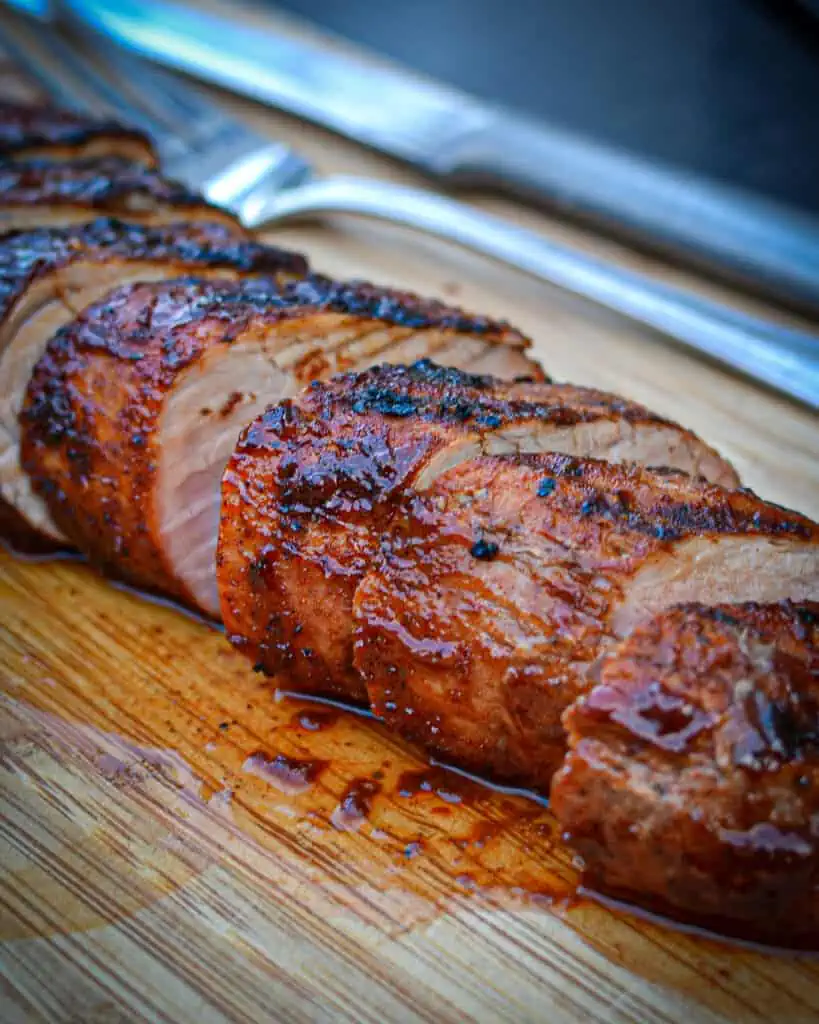
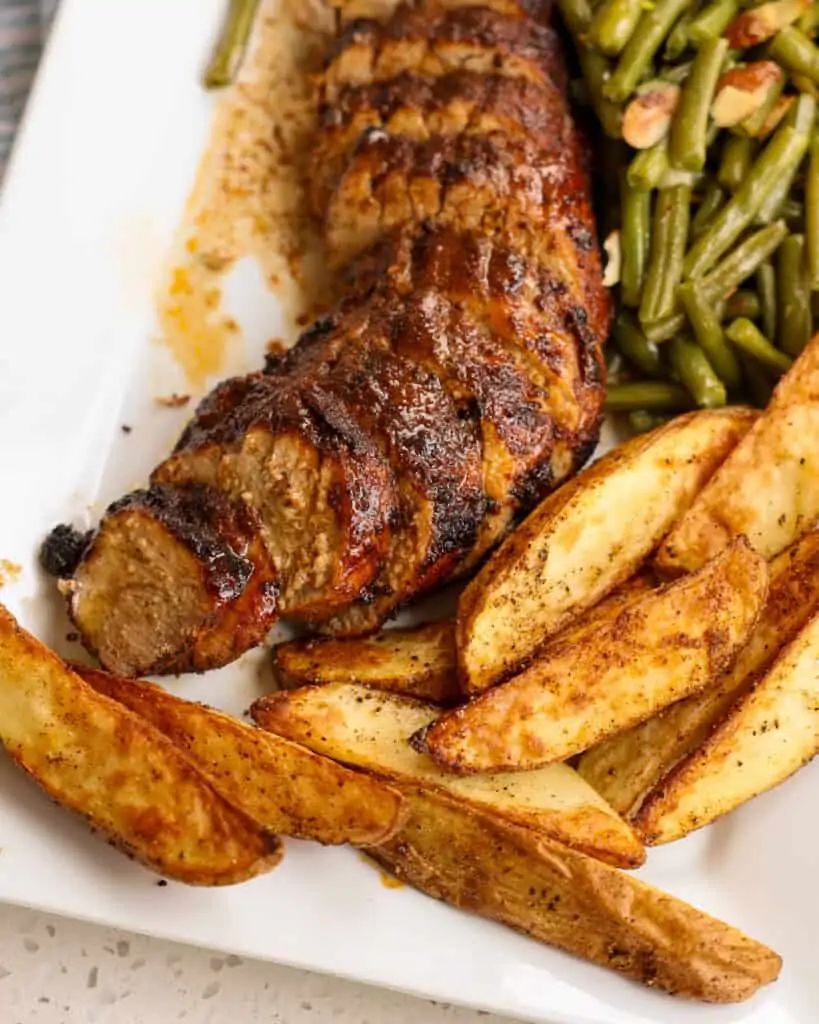



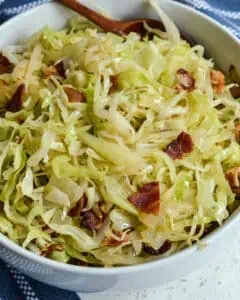


Catherine Post
Easy. Delicious. Everyone enjoyed this dish.
Beth Pierce
Thank you, Catherine!
Tracey
Made with one modification I wrapped with bacon and cooked at 400 for 35 min. The filling was really good!
Beth Pierce
Thanks, Tracey! So glad that you liked it. Great ideas with the bacon! I love bacon!
Lynndee
This is making my mouth water. I bet it is as good as it looks. I am going to make it this weekend. I will let you know what the family thinks. Thanks for always sharing your recipes.
Beth Pierce
You are most welcome, Lynndee.
Jupiter
I love how fancy stuffed pork tenderloin looks! Thank you for your recipe, it’s a great show stopper for dinner.
Harold
We loved this. You are correct it is fairly easy to truss a pork tenderloin. Thanks for including the video.
Beth Pierce
You are most welome, Harold.